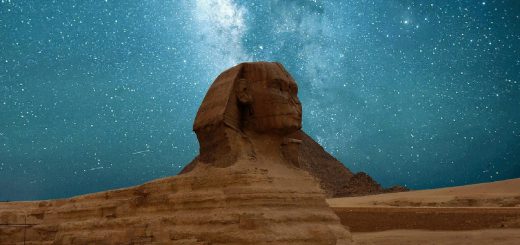Trade Routes of the Silk Road and Their Impact

Before diving in, please note: This post is for informational purposes only. If you’d like to know more about how we approach topics, feel free to check out our friendly Disclaimer Page.
Hey there, amazing readers! 🖐️ Just a quick note: yes, we know there are a lot of ads here. Trust us, we get it—it’s not the prettiest look, but they help us keep this blog alive and kicking. Those pesky little ads cover the costs of all the behind-the-scenes magic, from hosting and tech stuff to creating content we hope you’ll love.
We’re committed to delivering quality posts, and your support (even just sticking around despite the ads) means everything to us. So, bear with us, and thanks for helping us keep the good vibes rolling. Now, on to the fun stuff! 😉
TRANSLATE BUTTON AT THE END OF THE ARTICLE
A Quick Overview
The Silk Road, that ancient network of trade routes, serves as a fascinating bridge connecting cultures across vast distances.
Imagine merchants traversing deserts, mountain ranges, and bustling cities, carrying not just goods but ideas, technologies, and cultures.
The Silk Road has shaped civilizations and influenced societies far beyond its original boundaries.
This article explores the trade routes of the Silk Road and their profound impact on the world.
The Silk Road: A Journey Through Time and Space
The Silk Road was never a single road but rather a complex web of trade routes that sprawled across Asia, linking the East and West.
This network flourished from around the 2nd century BCE to the 14th century CE, allowing for the exchange of not just silk, but a plethora of goods and ideas.
Can you picture the scene?
Camels laden with treasures trudging through arid landscapes, merchants haggling in vibrant marketplaces, and travelers sharing tales of distant lands!
The routes connected significant cities and regions, including China, India, Persia, the Middle East, and parts of Europe.
Each stretch of the Silk Road presented a unique set of challenges and opportunities.
From the cold mountains of Central Asia to the hot deserts of Arabia, the geography shaped the trade practices and the goods that were exchanged.
Traveling these routes was an adventure filled with uncertainty.
Merchants faced not only the challenge of long distances but also threats from bandits and harsh weather.
Yet, the allure of rich profits drove them forward.
As we delve deeper, we’ll see how this remarkable journey through time and space transformed economies and cultures.
Origins of the Silk Road: A Trade Network Emerges
The origins of the Silk Road can be traced back to the Han Dynasty in China, around the 2nd century BCE.
At that time, China was eager to share its silk, a luxurious fabric that captivated the world.
This desire for trade led to the establishment of routes that connected the Chinese Empire with neighboring regions.
Initially, trade was limited to a series of overland paths.
However, as demand for silk grew, the routes expanded.
The creation of the Silk Road marked the beginning of a new era in commerce.
Various kingdoms and empires saw the potential for wealth through trade and began to invest in infrastructure.
In addition to silk, other products were exchanged.
Spices, precious stones, and metals flowed into China from the West, while ideas, art, and technology made their way back.
The Silk Road was like a giant marketplace where cultures mingled and enriched one another.
The exchange was not solely about commerce.
Diplomatic missions and cultural exchanges also thrived along these routes.
As traders traveled, they brought with them stories, religions, and knowledge.
This interplay between trade and culture laid the groundwork for what we now recognize as globalization.
Key Cities Along the Silk Road: Crossroads of Cultures
The Silk Road was dotted with thriving cities that became melting pots of culture and commerce.
Places like Samarkand, Bukhara, and Kashgar were not just stops along the way; they were vibrant centers of trade where diverse cultures converged.
Samarkand: This city, located in modern-day Uzbekistan, was renowned for its stunning architecture and cultural significance.
It served as a hub for scholars, traders, and artisans from various backgrounds.
Imagine walking through bustling bazaars filled with beautiful textiles and spices!
Bukhara: Known for its grand mosques and caravanserais, Bukhara was another vital Silk Road city.
It attracted not only traders but also intellectuals and artists, fostering a rich cultural environment.
Kashgar: This oasis town in Xinjiang, China, acted as a critical junction where goods from the East and West met.
Its strategic location made it a bustling market town where caravans gathered.
These cities were more than trade stops; they were places where languages intermingled, philosophies exchanged, and innovations sparked.
The impact of these crossroads on world history is profound, as they facilitated the spread of diverse ideas and practices.
The Goods That Shaped Trade: Silk, Spices, and More
Silk is undoubtedly the star of the Silk Road, but the famous trade route was famous for much more than that.
A tantalizing array of goods changed hands, creating a rich tapestry of trade.
Silk: The coveted fabric, made from silkworms, was the primary product that gave the road its name.
It was so precious that it was often used as currency!
Spices: From fragrant cinnamon to fiery pepper, spices were highly sought after.
They were used not just for flavoring but also for preservation and medicinal purposes.
Precious Metals and Stones: Gold, silver, and gems like lapis lazuli flowed along the Silk Road, enhancing the wealth of those involved in trade.
Textiles: Besides silk, other textiles like cotton and wool also saw significant trade.
Each region had its unique styles and techniques.
Technology: Innovations such as papermaking, printing, and even gunpowder traveled along these routes, revolutionizing societies.
Each goods exchange carried profound implications.
For instance, the introduction of spices to Europe during the Middle Ages changed culinary practices forever.
The demand for silk fueled entire industries and influenced fashion trends across continents.
Cultural Exchanges: Art, Religion, and Ideas Flow
The Silk Road was not just a route for trading goods; it was a vibrant conduit for cultural exchange.
As merchants traveled these paths, they carried with them not just products but ideas and beliefs.
Art: Artistic styles converged and transformed as cultures interacted.
For example, the intricate designs found in Islamic art were influenced by Chinese motifs.
Religion: Buddhism spread from India to East Asia along the Silk Road, while Islam made its way into Central Asia.
These religions shaped societies and created communities across diverse regions.
Science and Philosophy: Scholars exchanged knowledge about astronomy, mathematics, and philosophy.
The works of Greek philosophers, for instance, found their way into the East, influencing thinkers like Ibn Sina (Avicenna).
Language: The mingling of cultures also led to the development of new languages and dialects.
The need for communication among traders resulted in the creation of pidgins.
The cultural exchanges that occurred along the Silk Road have left a lasting impact on societies.
Elements of art, religion, and philosophy can be traced back to these interactions, highlighting the interconnectedness of human experiences.
The Role of Caravans: Travelers of the Silk Road
Imagine a caravan of camels, laden with goods, trudging through the desert.
These caravans were the backbone of Silk Road trade, facilitating the movement of merchandise across long distances.
Caravans typically consisted of dozens of animals, along with a group of traders.
They were carefully organized to ensure safety and efficiency.
The groups often included guides, laborers, and protectors.
Traveling in numbers not only provided security against bandits but also made negotiations easier with local merchants.
The camel was the primary mode of transport due to its adaptability to harsh conditions.
These "ships of the desert" could carry heavy loads over long distances without needing much water.
The journey was never easy.
Caravans faced various challenges, from scorching heat to freezing nights.
Yet, the spirit of adventure propelled them forward.
Many traders developed strong bonds during their travels, sharing stories and laughter, making the arduous journey more bearable.
The importance of caravans in facilitating trade cannot be overstated.
They kept the flow of goods and ideas moving, forming an essential part of the Silk Road’s legacy.
Navigating the Challenges: Terrain and Weather Woes
Traveling the Silk Road was like a rollercoaster of environmental challenges.
From the burning sands of deserts to towering mountains, the geography posed serious obstacles.
Deserts: The Taklamakan and Gobi deserts presented severe heat and limited water sources.
Travelers had to plan their journeys around the availability of oases.
Mountains: The Pamirs and Tianshan ranges were daunting.
High altitudes and treacherous paths made travel perilous.
Yet, these regions also offered breathtaking views!
Weather: Sandstorms and blizzards could halt progress.
Caravans had to be prepared for sudden changes in weather.
Despite the difficulties, traders found ways to adapt.
They established routes that avoided the worst of the terrain and learned the best times to travel.
Their resilience and ingenuity allowed them to conquer the landscapes that lay before them.
The Influence of Empires: Power Players in Trade
Various empires played pivotal roles in the Silk Road’s development.
Each contributed to shaping trade policies, cultural exchanges, and security.
The Han Dynasty: As one of the earliest powers to establish trade along the Silk Road, the Han Dynasty encouraged merchants to explore and trade.
They recognized the economic potential of connecting with distant lands.
The Mongol Empire: During the 13th century, the Mongols unified large sections of the Silk Road under their control.
Their rule brought a period of relative peace known as the Pax Mongolica, which facilitated trade and cultural exchange.
The Byzantine Empire: This empire acted as a bridge between East and West, influencing trade routes and introducing Eastern goods to Europe.
The Persian Empire: Persian merchants played a crucial role in connecting the East and West, especially in the trade of luxury goods.
Each empire left its mark on the Silk Road, influencing trade practices and cultural interactions.
The interconnectedness of these powers created a dynamic trading environment that lasted for centuries.
Silk Road Innovations: Advancements Born of Trade
The Silk Road wasn’t just about exchanging goods; it was a cradle of innovation.
As traders interacted, they shared not only products but also knowledge and technologies.
Papermaking: The technique of making paper spread from China to the West, revolutionizing communication and record-keeping.
Gunpowder: This invention, originating in China, found its way to the Middle East and Europe, altering the course of military history.
Compasses: The magnetic compass traveled along the Silk Road, improving navigation for sea and land routes.
Agricultural Techniques: New farming practices and crops spread among regions.
This exchange improved food security and agricultural productivity.
These innovations had lasting implications.
They transformed societies, influencing everything from governance to daily life.
The Silk Road became a breeding ground for progress, showing that trade is about more than just commerce; it’s about ideas that change the world.
Legacy of the Silk Road: Lasting Impact on Society
The legacy of the Silk Road extends far beyond its physical routes.
Its influence is visible in various aspects of modern life.
Cultural Diversity: The mixing of cultures along the Silk Road laid the foundation for the diverse societies we see today.
Many customs and traditions can be traced back to these exchanges.
Economic Impact: The trade routes established a precedent for global trade practices.
Today’s globalization has its roots in the exchanges that occurred long ago.
Art and Architecture: The artistic styles that emerged from Silk Road interactions can still be seen in art and architecture.
Think of the intricate designs that adorn buildings and artifacts around the world.
Religious Tolerance: The Silk Road fostered an environment of dialogue and understanding among different belief systems.
This spirit of coexistence continues to inspire efforts for peace today.
Understanding the Silk Road helps us appreciate how interconnected our world truly is.
The past informs the present, reminding us of the significance of collaboration and cultural exchange.
Modern Echoes: How the Silk Road Inspires Today
While the Silk Road may not physically exist today, its spirit lives on.
Modern trade routes reflect the ancient network’s principles, connecting countries and cultures.
Belt and Road Initiative: China’s ambitious project to enhance global trade routes echoes the ancient Silk Road.
It aims to improve infrastructure and foster economic cooperation.
Cultural Festivals: Events celebrating Silk Road heritage are held worldwide, showcasing the richness of shared histories.
These festivals promote cultural exchange and understanding.
Globalization: The interconnectedness we see today—economically, culturally, and digitally—mirrors the ancient Silk Road’s legacy.
In this way, the Silk Road continues to inspire.
It reminds us of the importance of collaboration and understanding among diverse cultures.
Celebrating the Silk Road: Festivals and Events Worldwide
Today, the legacy of the Silk Road is celebrated through festivals and events across the globe.
These gatherings honor the rich history and cultural exchange that the road facilitated.
Silk Road Festival: Held in cities like Samarkand and Bukhara, these festivals feature traditional music, dance, and crafts.
They attract tourists and locals, fostering appreciation for the region’s heritage.
Cultural Exhibitions: Museums worldwide host exhibitions showcasing artifacts from the Silk Road.
These exhibits educate the public about the historical significance of the trade routes.
Food Festivals: Culinary events celebrate the diverse cuisines that emerged from Silk Road exchanges.
Picture food stalls serving dishes influenced by flavors from East to West!
Art and Music Festivals: Events highlighting artistic expressions inspired by Silk Road cultures encourage cross-cultural dialogue and creativity.
These celebrations not only pay homage to the past but also inspire future generations.
They foster a sense of unity and appreciation for our shared human experience.
Conclusion
The Silk Road is a testament to the power of trade and cultural exchange.
It shaped societies, influenced economies, and fostered connections that continue to resonate today.
As we explore its intricate routes, we uncover stories of adventure, innovation, and collaboration that remind us of our shared humanity.
The legacy of the Silk Road teaches us about the importance of understanding and embracing diversity, inspiring us to build a more connected and appreciative world.
So, whether we’re sharing a meal from a different culture or celebrating a festival that honors our history, let’s keep the spirit of the Silk Road alive!

The Enlightenment Journey is a remarkable collection of writings authored by a distinguished group of experts in the fields of spirituality, new age, and esoteric knowledge.
This anthology features a diverse assembly of well-experienced authors who bring their profound insights and credible perspectives to the forefront.
Each contributor possesses a wealth of knowledge and wisdom, making them authorities in their respective domains.
Together, they offer readers a transformative journey into the realms of spiritual growth, self-discovery, and esoteric enlightenment.
The Enlightenment Journey is a testament to the collective expertise of these luminaries, providing readers with a rich tapestry of ideas and information to illuminate their spiritual path.
Our Diverse Expertise 🌟
While our primary focus is on spirituality and esotericism, we are equally passionate about exploring a wide range of other topics and niches 🌍📚. Our experienced team is dedicated to delivering high-quality, informative content across various subjects ✨.
To ensure we provide the most accurate and valuable insights, we collaborate with trusted experts in their respective domains 🧑🏫👩🏫. This allows us to offer well-rounded perspectives and knowledge to our readers.
Our blog originally focused on spirituality and metaphysics, but we’ve since expanded to cover a wide range of niches. Don’t worry—we continue to publish a lot of articles on spirituality! Frequently visit our blog to explore our diverse content and stay tuned for more insightful reads.





